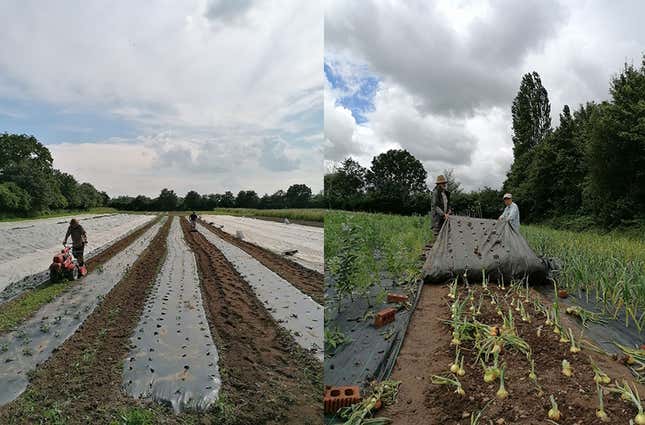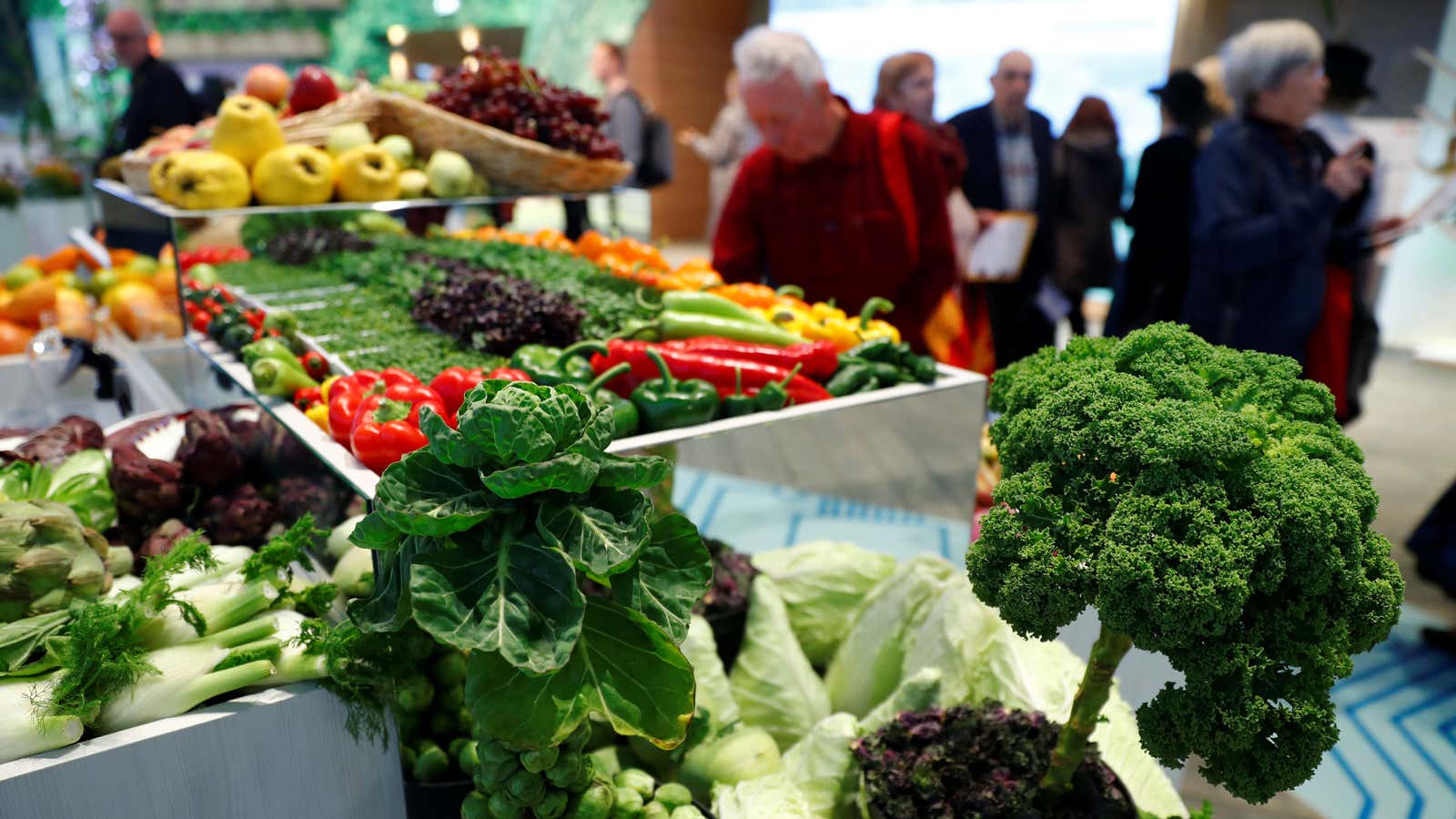While environmentally conscious buyers may opt to buy groceries without plastic packaging, agricultural plastic used to grow those foods is an evergrowing challenge. With carbon emissions from plastic estimated to outpace coal by 2030, and an increasing awareness of how PFAS in water and soil can affect public health, alternatives to plastic are needed well before a piece of produce arrives at the grocery store.
In particular, plastic film used for mulching sits on top of the soil surrounding crops. Depending on the farmer, the plastic film is used for a single season—then is discarded, burned, or even shredded and left in the soil. “A lot of farmers use a black plastic mulch. And then they’ll just plow that in, it just breaks into pieces and you’ve got bits of plastic everywhere,” said Rebecca Stevenson, a farmer at Five Acre Community Farm in the UK. Five Acre Community Farm uses a combination of thicker plastic mulch that they reuse for up to 10 years, and a biodegradable film made out of corn starch that is bought each year. The farm buys one 100-meter roll of plastic mulch that costs about £117 ($146) compared to about £25 for 100 meters of biodegradable film. So after 10 years the biodegradable supplies cost more than twice as much.

How salad greens are grown in plastic
Non-plastic alternatives include more than packaging
“It’s still very resource-intensive to produce biodegradable film because you have to have the land to grow the crop,” explained Judith Conroy, a researcher at Coventry University in the UK. The corn used to make starch films may have been grown with pesticides and harmful fertilizers and the manufacturing process distributed. “We’ve used a mulch made of maize grown in northern Italy, processed in Belgium, then transported to the UK.” said Conroy. “It’s biodegradable, but it’s not without a carbon footprint.”
Farmers working with Coventry University to phase out toxins from organic farming in Europe have pointed to the potential of using existing biodegradable scraps on their farm like grass clippings, hay, and fibers as mulching. “In a broader range of strategies, a good agricultural system is all integrated,” said Francis Rayns, a researcher on the project. “It’s not all about having weeds as an [isolated] problem. It’s having crop rotation and choosing a variety of crops, having sufficient soil fertility…all of those things interacting will make things less of a problem. So there’s less need to sort of reach for a technological solution.”
Scotland prevents agricultural plastic waste from being burned in fields. Both Rayns and Conroy think that regulations on agricultural plastics would both benefit the environment, and level the playing field for farmers.
